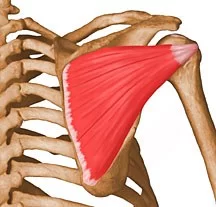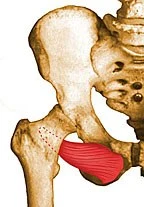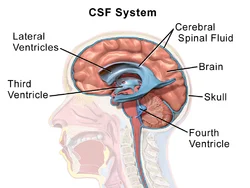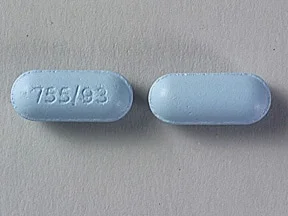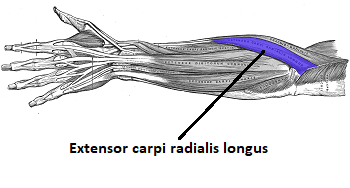Infraspinatus muscle
What is the Infraspinatus muscle?
The thick triangular muscle known as the infraspinatus covers the majority of the scapula’s dorsal surface. It connects the proximal humerus to the scapula, mostly from the infraspinous fossa.
Along with the muscles of the subscapularis, teres minor, and supraspinatus, the infraspinatus is one of the four rotator cuff muscles. The infraspinatus muscle, which is a part of the rotator cuff muscles, is primarily responsible for stabilizing the glenohumeral, or shoulder joint, as well as external rotation of the humerus.
Origin of Infraspinatus Muscle
The infraspinatus muscle originates from the infraspinous fossa, which is a concave depression located on the posterior surface of the scapula (shoulder blade). More specifically, it originates from the medial two-thirds of the fossa, as well as from the fascia covering the muscle. The infraspinatus muscle is one of the four muscles of the rotator cuff, and its origin on the scapula is important for its function in external rotation and stabilization of the shoulder joint.
Insertion
the capsule of the shoulder joint and the posterior aspect of the greater tuberosity of the humerus.
Relations
On the scapula’s dorsal surface, the Infraspinatus muscle arises medially and superiorly to the teres major and minor from the supraspinatus muscle. Infraspinatus and supraspinatus are regarded as single functional units because of their close anatomical relationship and the fact that the scapula’s spine only separates them.
A thick fascia separates the infraspinatus muscle fibers from the teres minor and teres major, which run almost parallel to the shoulder joint. The infraspinatus is sometimes separated from the scapula’s neck as it moves toward the shoulder joint by the infraspinatus bursa, which may communicate with the cavity of the shoulder joint.
Innervation
The suprascapular nerve, which originates from the upper trunk of the brachial plexus and is derived from roots C5 and C6, innervates the infraspinatus as well as the supraspinatus.
Blood supply
The circumflex and suprascapular scapula arteries supply the infraspinatus with blood.
Function of Infraspinatus Muscle
A functional musculotendinous unit that moves and stabilizes the shoulder joint is formed by the rotator cuff muscles. This muscular apparatus keeps the humerus’s head centered within the glenoid cavity while allowing for a wide range of arm motion.
The rotator cuff is a tendinous sleeve made up of the tendons of the rotator cuff muscles and the fibrous capsule of the glenohumeral joint. Each muscle has a pulling axis that causes a particular movement (prime mover), but they all create a concavity compression through the rotator capsule. This is a stabilizing process wherein the rotator cuff compresses the humerus into the concavity of the glenoid fossa, controlling its separation by translating force. The infraspinatus and teres minor collaborate to counteract the upward pull of the deltoid muscle and stabilize the humeral head against the glenoid fossa when the arm is abducted. Both an impingement on the coracoid process and an upward displacement of the humeral head are prevented by this. Although the precise function of the supraspinatus in this movement is debatable, it supports the infraspinatus’s action.
Working as a prime mover, the infraspinatus is a strong lateral rotator of the humerus. This activity is significant in preloading the upper extremity in backward extension and external rotation on the shoulder joint, as found in activities like hitting above. When powerful overhead movements slow down, the muscle is contracted eccentrically to smooth out the upper limb.
Clinical Relevance
Compression on the suprascapula nerve near the scapular notch, is typically accompanied by atrophy in the supraspinatus and infraspinatus muscles in overhead athletes and SLAP lesions. When the suprascapular nerve is compressed in the spinoglenoid notch, isolated weakness or atrophy of the infraspinatus muscle can be seen. However, when the nerve is compressed in the spinpglenoid notch, it is typically caused by a ganglion cyst.
Referred pain to the middle and anterior deltoid regions is linked to infraspinatus muscle trigger points. Shoulder pain may be alleviated by using myofascial release techniques on the infraspinatus muscle.
Assessment
The arm is positioned in neutral abduction or adduction with the elbow flexed 90 degrees for evaluation of the infraspinatus muscle. The test is positive if there is pain or weakness when the shoulder is rotated laterally against resistance.
Infraspinatus muscle stretching
Relax your shoulders and cross your arms in front of you. Grasp the elbow of the arm that needs to be stretched and pull it slightly across your body. With your opposite arm, gently depress the forearm of the side that needs to be stretched. Feel the stretch across the shoulder blade. Repeat on the opposite side.

Infraspinatus muscle strengthening exercise
Infraspinatus active massage
The infraspinatus muscle is the focus of this massage and stretching technique. To get started, lean against a wall and place a massage ball on a tender spot on the belly of the infraspinatus muscle. Begin with your hand situated simply before your shoulder and your arm externally rotated (palm confronting the body). Continue stretching by rotating the hand inwards with the palm facing forward and raising the arm above your head. Perform this movement at a rate of three to four seconds. To finish a repetition, reverse the motion at the same speed. Do a limit of 5 recounts for every region and 1 set for each region (up to 3 regions might be utilized).
Side-lying uppercuts
This exercise targets the external rotators of the shoulder, which are responsible for strengthening the rotator cuff. While lying on your side, use your top arm to hold a dumbbell. As you raise the weight into maximum external rotation (within tolerable limits), keep the elbow tucked in on your side. Lower the weight slowly until you reach neutral rotation, then flex your shoulder to 90 degrees while keeping your elbow bent at 90 degrees.
Seated shoulder external rotation
This is a shoulder activity that objectives the outer rotators. Place one foot on the bench and use it to support your elbow as you sit on a bench to raise the knee. Start with your forearm parallel to the ground and a 90-degree elbow bent. Slowly rotate your shoulders downward until your forearm is at least parallel to the floor or as close as you can go that you can handle comfortably. Rotate slowly back up, and do it again if necessary.
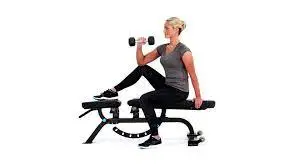
Side-lying external rotations
This exercise targets the external rotators of the shoulder, which are responsible for strengthening the rotator cuff. While lying on your side, use your top arm to hold a dumbbell. As you raise the weight into maximum external rotation (within tolerable limits), keep the elbow tucked in on your side. Repeat the process of slowly lowering the weight until it rests in front of your belly.
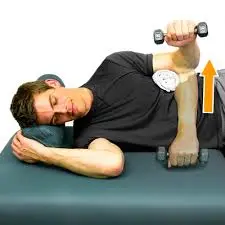
External rotation uppercuts
The dynamic stabilization of the glenohumeral joint is the focus of this strengthening exercise for the rotator cuff. Grab the band with the arm that is farthest from you after anchoring it down next to you. Perform a shoulder flexion exercise while maintaining an elbow-to-wrist alignment. Maintain an elbow bend of 90 degrees. During this movement, the forearm should be as close to vertical as possible.
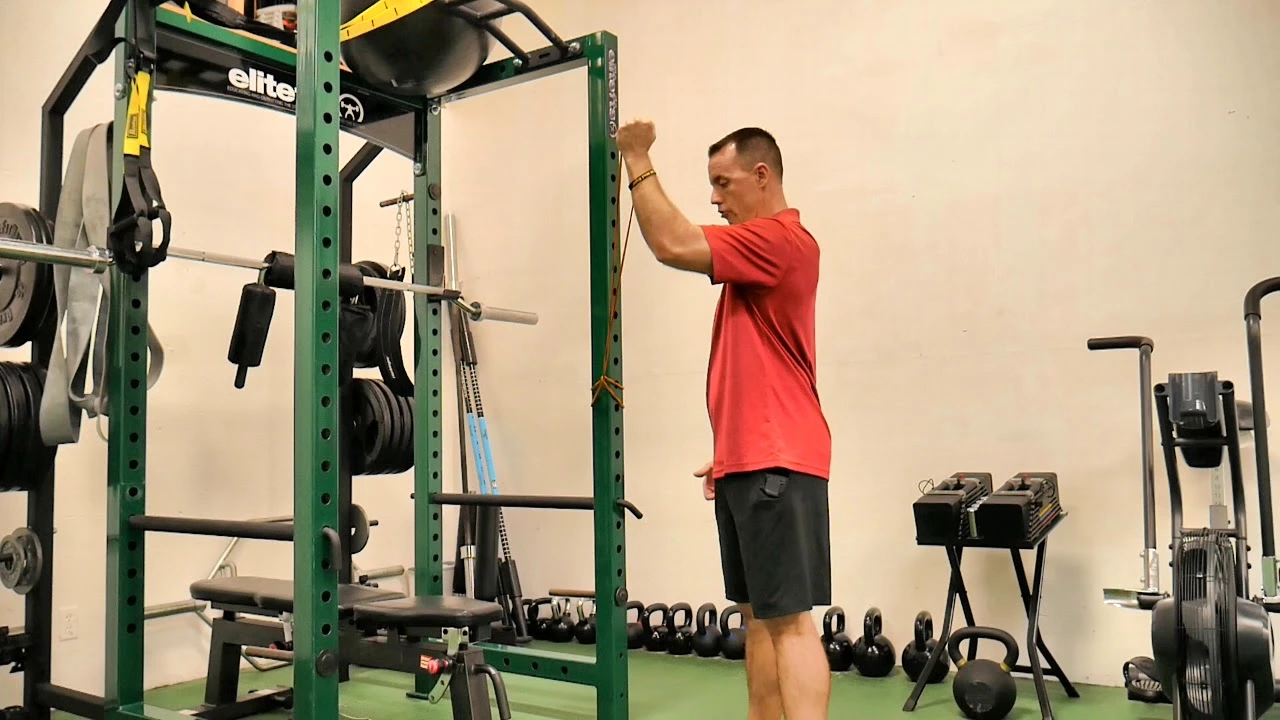
External rotation front press
The dynamic stabilization of the glenohumeral joint is the focus of this strengthening exercise for the rotator cuff. Grab the band with the arm that is farthest from you after anchoring it down next to you. While keeping the wrist in line with the elbow, perform a front press. During this movement, the forearm should be as close to vertical as possible.
Pull back press
This is a strengthening exercise for the shoulder external rotators and scapular retractors. Tie a band around a dumbbell to secure it to your feet. By grasping both ends with your hands, pull the band back to your shoulders. Keep your elbows stacked straightforwardly underneath your wrists by keeping your lower arms vertical to the floor. Keep your hands raised above your head and do not allow them to move forward to your elbows.
Eccentric shoulder external rotation
The rotator cuff muscles are given resistance during this exercise by using a band. Keep the elbows tucked in just below your shoulder while holding the band with your palms facing upward. Take as much of an external arm rotation as you can handle and slowly, over 5-7 seconds, return to the starting position.
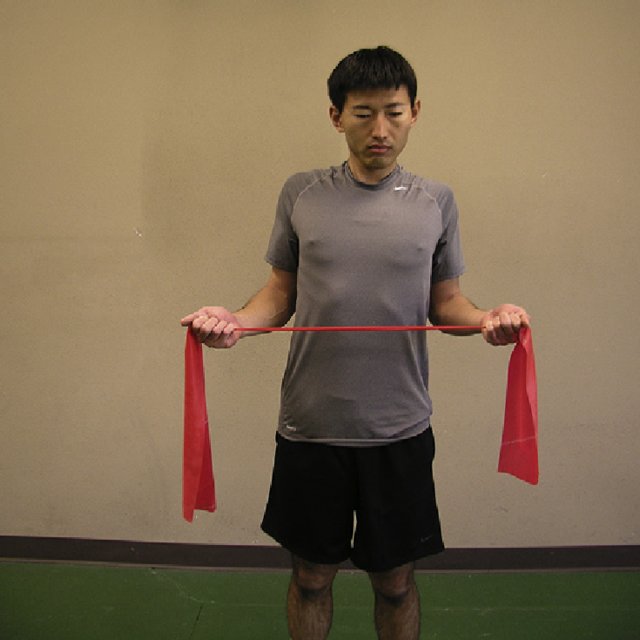
Cactus rotations
This is a shoulder external rotation strengthening exercise. Holding both hands, raise your elbows to shoulder height, and rotating your hands backward, wrap a band around your feet.
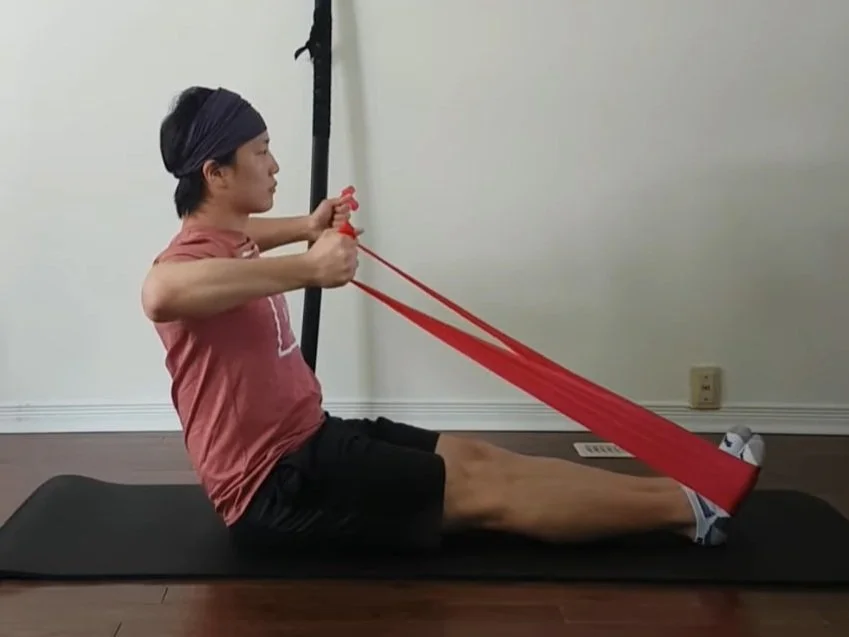
External rotation perturbations
A stability exercise for the rotator cuff that adds perturbations to train shoulder proprioception is this one. Wrap a stable object in a strength band by looping it through a fraction plate weighing up to 2.5 pounds. From here snatch the band with the arm farthest from the anchor point and agree with a particular position pull back from the anchor point. With an elbow bent at 90 degrees, keep the arm and elbow tucked to your side. Pull on the weight plate to tighten the band, then release. The band will shake as a result, so keep your arm and shoulder still.
External rotation side steps
The external shoulder rotators are the focus of this strengthening exercise for the rotator cuff. A band provides shoulder resistance in this progressive loading isometric exercise. To lessen the resistance, step out as far as you can while maintaining good form and hold for 5 to 10 seconds before coming back in.
Closed-chain external rotations
The external rotators of the shoulder are strengthened with this exercise. Overlay a towel and put it between your body and your arm to fix your elbow. Pull a strength band toward a stable object to create tension. Turn your body comparative with your body to get your external rotators in a closed chain system.

Isometric external rotation
Using a wall is an effort-based isometric contraction exercise. Stand next to a wall with your elbow twisted to 90 degrees. Maintain a straight elbow that is directly below your shoulder. Press outward into the wall with your thumb up as you gradually increase your strength over three seconds. Keep up with your greatest tolerable constriction for 5-7 seconds before steadily diminishing your strength to rest (again over a count of three seconds).
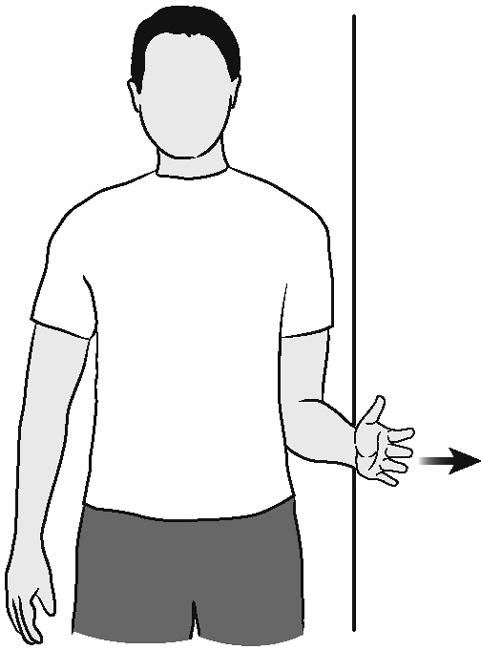
90 degrees external rotation
This is a shoulder-fortifying activity that objectives the external rotators in a concentric constriction. Position a band in front of you so that it is about head height. Starting with your forearm parallel to the ground, keep the elbow abducted until it reaches shoulder height. To add tension to the band, grab hold of the free end and step backward. Pull the band by externally turning the shoulder until it is opposite to the floor (90 degrees external rotation). To finish a repetition, slowly return to the starting position.
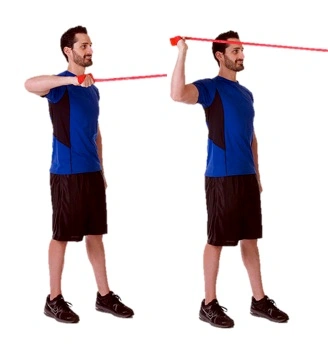
Banded shoulder external rotation
This is a shoulder external rotator strengthening exercise. Begin by securing a band to a steady item close to you at generally the level of the mid-middle. Snatch the band with the furthest arm and raise the elbows to just under 90 levels of shoulder flexion. Hold the end range position for up to two seconds while externally rotating the arm by 90 degrees.
Front band pull shoulder rotations
This is a warm-up exercise for shoulder mobility. Join one finish of a light-strength band to a steady item before you and circle it around the upper arm near the armpit. Turn your arm over so that it is within reach of your most comfortable position and raise it to 90 degrees abduction.
Prone shoulder external rotations
This is a shoulder external rotation mobility workout. Because it lets you comfortably tuck your arms below the bar, this exercise can help you feel more at ease performing barbell squats. Hold for 5-7 seconds while rotating your hand as high as possible toward the ceiling while keeping your elbow pinned to the floor. The position of your elbow can change depending on your objectives—for example, it will be lower for low-bar squats than for high-bar squats.
Prone w-rotation
End-range strengthening of the shoulder external rotators is the goal of this exercise. Begin by lying on the ground with one arm extended to approximately 90 degrees. During this exercise, cushion your forehead with one of your forearms to allow your neck to relax. While in a thumbs-up position and elbow twisted to 90 degrees, pivot your arm toward the roof while sticking the elbow to the floor. For up to seven seconds, hold the end range.
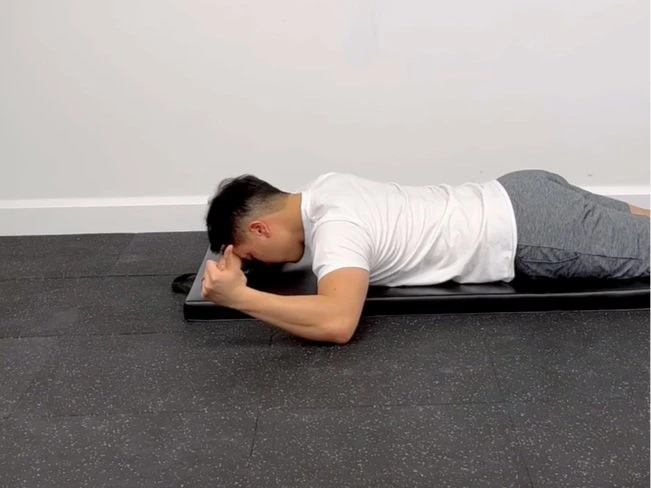
External rotation back step
An isometric contraction of the external rotators is the focus of this shoulder stability exercise. Place a head-height band in front of you. Keep the elbow abducted to shoulder height and flexed to 90 degrees. Take a step backward while gripping the free end of the band to increase tension and hold this position for up to 10 seconds without moving. Step forward to ease the band strain and rest for 10 seconds before recounting.
FAQ
Where is the pain with the infraspinatus tear?
At the point when pathology is available pain side effects normally happen in the upper back or down into the deltoid/bicep region. When an infraspinatus tendon is torn, patients will also experience pain when sleeping, working at a computer, reaching behind them, and sleeping.
How does it feel to have an infraspinatus tear?
Pain in the infraspinatus that prevents you from using your shoulder and difficulty sleeping with your shoulder affected. The motion range is limited. a feeling that your shoulder is grinding or catching when you move it.
If the infraspinatus is damaged, what happens?
A harmed infraspinatus ligament will more noteworthy weaken the shoulder joint and keep the arm from rotator outwards with original capacity. Due to assistance from the other rotator cuffs, the arm may still be able to rotate, but a torn infraspinatus tendon will significantly reduce strength.
Can a tear in the infraspinatus heal by itself?
Despite the fact that most tears can’t heal all alone, recapturing capability without surgery is in many cases conceivable. However, because many tears cannot heal without them, surgery is typically recommended if you are physically active, use your arm for sports or overhead work, or both.
How much time does it take for an infraspinatus tear to heal?
It requires six to about two months for the ligament to heal to bone. The length of time it takes for the tear to heal completely varies. The full recovery time for small tears is approximately four months, while for large tears, it takes six months. A full recovery from severe, extensive tears can take anywhere from six to twelve months.

